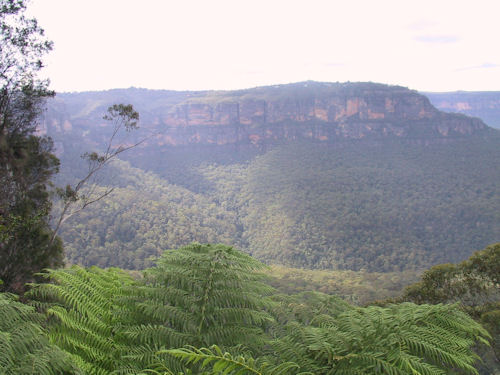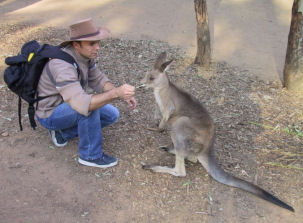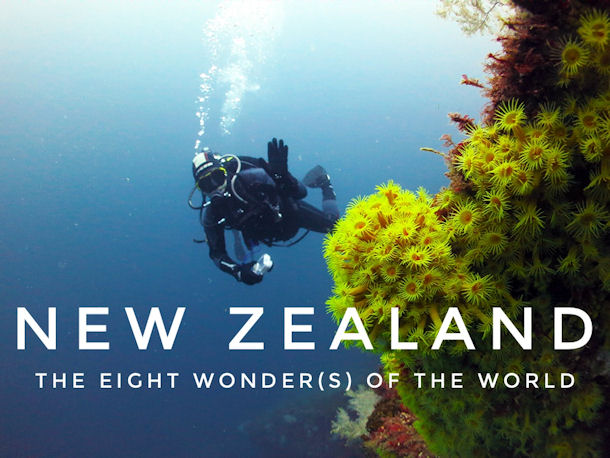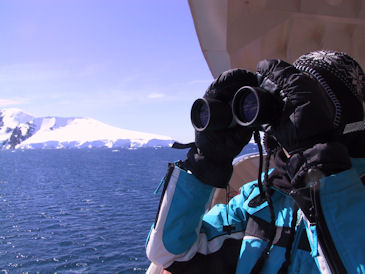by Roger Blum
On The Road, Down Under
|
|
Australia - for many, the fifth continent is the ultimate destination for diving. In the northeast, you have the lure of the Great Barrier Reef, in the south, divers are drawn by sea lions and white sharks, and in the west, the famed Ningaloo Reef offers the unique possibility of observing the remarkable whale shark.
|
|
Flying in from Frankfurt, our plane first travelled over the polar route to Japan, and after a short stay in Tokyo, I continued south to Australia.
|
|
On landing in Sydney, my first destination was Collaroy Beach, just north of the city’s central hub. As soon as I arrived on the beach for my first coastal stroll, between the washed up kelp, I discovered the spiral-shaped egg of a Port-Jackson-Shark.
|
| Collaroy Beach |
Egg of a Port-Jackson-Shark |
|
I could hardly wait to finally go underwater. Unfortunately, my initial euphoria quickly clouded over. While back in Germany spring was on its way, in the south of Australia the first autumn storms were starting to arrive. Because of the rough weather conditions and the mighty autumn surf, it was only possible to dive on a few select days.
During the first days the weather held up and I took the opportunity to do several dives at Shelly Beach, just north of the capital. The underwater scenery was dominated by large boulders, sea grass and kelp meadows. Amongst the plant life, there were countless fish, some of which you can only find in South Australia. I didn't see one of the most famous examples, the leafy seadragon, but I did come across some blue groupers and the ‘Old Woman’ angelfish, a species only found in Australia that can easily be recognized by its peculiar shape. Its body is silver-white and has six to eight black bands wrapped around it that vary in width. The angelfish has two different dorsal fins, the second of which is shaped like a sickle: their spines hold a painful poison. And despite intensive research, I can’t tell you why someone decided to name these particular fish after “old women”.
|
 |
 |
|
On my expeditions through the underwater world of Sydney I also encountered scorpion fish, octopuses, nudibranchs and banjo rays, as well as one of the largest cephalopods in the world - the Australian giant cuttlefish. I found these animals, measuring in at about one metre in length, under overhangs, in caves, channels and tang beds. Obviously it had just been mating season, because here, the giant sepias, usually known for their solitary nature, were mostly in pairs or groups of three.
|
|
Southern fiddler ray (Trygonorrhina fasciata)
|
Australian giant cuttlefish (Sepia apama)
|
Eastern blue groper (Achoerodus viridis)
|
|
One of the most impressive experiences I had were my numerous encounters with Australia’s wobbegongs. These animals belonging to the carpet shark family and they are masters of camouflage. They sit – almost completely hidden from vision- on the seabed or under rock ledges, laying in wait for their prey. And wobbegongs are not completely harmless. There are some reports that they have attacked divers, but apparently most instances have occurred after high-spirited individuals have either pulled the shark by the tail or carelessly stepped on them. But in some cases, there have been attacks without any provocation.
After three days at Collaroy Beach I went to meet two friends from Berlin in the Sydney district of Woollomooloo. Together decided to drive south to Phillip-Island, just off the coast of Melbourne and over a thousand miles away, to observe the famed seals and penguins of southern Australia. We bought an old 1988 Ford Falcon and that was that: Full speed ahead!
The first destination of our tour was the small town of Katoomba in the Blue Mountains. The mountain range towers 1,100 m high over Sydney, and it is from a slight haze of blue produced by the countless eucalyptus trees when seen from a distance that the range derives its name. I repeatedly peered at the treetops in search of koala bears. These cute little animals live almost exclusively in eucalyptuses, eating the trees’ leaves. Because of this, they often fall drunk asleep during the day because eucalyptus contains an intoxicating substance.
|
 |
 |
|
Since there were no koalas to be seen far and wide, we visited the Australian Wildlife Park after a detour to the Three Sisters rock formation. There I saw kangaroos, some of which had baby roos in their pouches, as well as emus, koalas and wombats, who happen to live in holes in the ground. Some of these animals were housed in outdoor enclosures to which visitors had free access so you could have direct contact with the animals. The kangaroos were particularly popular as photo subjects, and were also willing to let visitors stroke them.
|
|

|

|
|
It was now an almost 1.000 km journey from Katoomba - via Melbourne - to Phillip-Island. The island had always been the principal destination of my trip. It’s not only the home of Australia's largest sea lion colony, but it’s also the largest breeding penguin colony in the continent. The green slopes of the bizarre cliffs are full of the smallest of the 18 penguin species in the world, the dwarf penguin. They are the only penguins to breed on Australia's coast.
After getting to the capital of Phillip-Islands, Cowes, we started a bicycle tour to the western tip of the island. There were repeated bursts of short yet heavy rain showers, but they were well suited to the rough seas and impressive coastal landscape. At Point Grant I was able to observe and photograph the first of the penguins. From the tip of the island I also saw a large seal colony at the Seal Rocks, but this was only possible with a lot of effort and a very good pair of binoculars. Fortunately, in the late afternoon one of these funny, playful mammals appeared at the pier of Cowes to snatch the fish from an angler, willingly making himself available to me as a model.
|
|

|

|
|
I will never forget the evening when I had the opportunity to experience the famous Penguin Parade at Summerland Beach. At nightfall hundreds of little tailcoats came out of the sea and waddled their way up the embankment to their breeding grounds. It was particularly impressive how these little guys gathered near the shore in groups of 20 to 25. If one of the animals left the group, the whole gang would go back into the sea to gather their friends, returning with the stragglers and marching off together in an orderly manner.
|
|

|

|
|
The following morning, our group headed north again along the east coast. On the way I saw wild kangaroos, the towering mounds of termites, and numerous parrot species, all the way from the colorful budgerigar to the magnificent cockatoo.
After a 3.000 km journey through southeast Australia, we returned to Sydney. I did one last dive and then the trip was over again. I would still have another two days in Tokyo, but I was a little sad as I took off from Sydney. I might be leaving the kangaroos, koalas, sharks, penguins and seals, but realised that happily, I would also be taking the memory of them home with me forever...
(First publication in „Adlershofer Flossenblätter“ Issue 53/2003)
|
|
|
Could be interesting for you:
|

The Eight Wonder(s) of the World - "Deep diving" in Milford Sound (New Zealand)
Exceptional natural phenomena are often referred to as "the eighth wonder(s) of the world". One such example is Milford Sound in New Zealand’s South Island, but on this occasion, it definitely deserves the title. The impressive fjord offers recreational divers a unique opportunity to experience the underwater world of the deep sea with relative ease. This is because there is a three to five meter thick film of fresh water, fed by rain and melt water, that lies on top the fiord’s heavy salt water. As much of the fresh water runs through the forest, it picks up tannin from the trees. This makes the top layer of the fiord incredibly dark. Therefore, certain life forms can be observed in Milford Sound that you can only usually encounter aboard submersibles deep at the bottom of the ocean. For example, you can meet the world's largest colony of black coral, which usually only occurs 200 m to 1000 m below the water’s surface. Diving to such depths with compressed air alone would be impossible. This makes the waters of Milford Sound a true treasure of marine biology.
[read more]
|
|

To the end of the earth: A Ship's Diary of a Voyage to Antarctica (Antarctica)
One hundred years ago, Antarctica was the last unexplored continent on our planet. For centuries, the mysterious southern continent stubbornly held out against conquest and discovery. The darkness of the polar night, which lasts months on end, could plunge explorers into madness. That’s only if they hadn’t perished at the hands of the icy cold. Eaten away by scurvy, slowly freezing to death beside the remnants of their ships, the fast-fading explorers would burn down their vessels to the waterline to eek out the last bit of heat from their boats before their final breath. Antartica is the coldest and windiest place on earth, drier than the Sahara and as cold as Mars. Despite these extreme conditions, the ice-cold seas around the continent are among the richest in species in the world. In the Antarctic summer of 2008, I had the opportunity to experience this unique landmass for myself. Not wanting to suffer the fate of my predecessors, I ventured south on board a warm, comfortable ship...
[read more]
|
|
|
|
|


